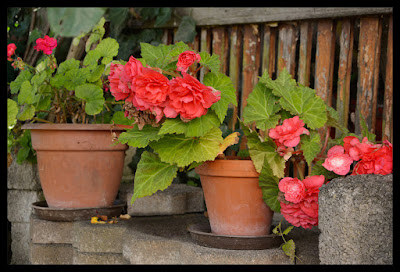Make up new pots and containers especially hanging baskets and let annuals harden off for a couple of weeks. Use good quality compost and add slow release fertiliser and water retaining gel or crystals. Plant up around the edges to give good visual impact.
Monday, 1 May 2017
May News from Upchurch Horticultural Society - From the Potting Shed
Sponsored by Upchurch River Valley Golf Club - www.rivervalleygolf.co.uk
The lawn will be well under way with regular mowing required with the blades low. The weed and feed in April should be producing results and new seed will start to germinate. Avoid cutting new grass until it is 3” long. Good maintenance through the year with another weed and feed later in the summer (avoiding times of drought) will keep it looking lovely.
Deadhead spring bulbs but avoid cutting down foliage and just let them die back naturally. Harden off seedlings and plug plants by putting them outside during the day. Herbaceous perennials can still be divided and now is the time to prune penstemons. Trim back spreading plants like aubretia and the dead stems of lavender. As the early flowering shrubs finish, prune them back to encourage new growth which produces the flowers next year. However, after June stop pruning. Also tidy up the spring flowering clematis by cutting out dead or overcrowded growth. Start tying-in and supporting new growth where needed. Now is also a good time to take cuttings from tender new growth. Evergreen hedges can be clipped.
Maintain a routine of watering and feeding containers and give them a top dress and even mulch with bark or decorative stone to retain moisture and suppress weeds. A balanced liquid feed every 4 weeks will keep them in good shape. Keep an eye out for pests and diseases which will start to get to work especially rose blackspot which can be treated with a systemic fungicide. Remove infected leaves and do not compost.
Make up new pots and containers especially hanging baskets and let annuals harden off for a couple of weeks. Use good quality compost and add slow release fertiliser and water retaining gel or crystals. Plant up around the edges to give good visual impact.
The vegetable patch should be up and running. Pick asparagus when it’s about 8” long and unforced rhubarb should be ready but only take about one third of the new stems. When the broad beans start to develop pinch out the top leaves to control blackfly and bump up the bean pods. Continue to earth up potatoes (although personally I don’t bother). Harden off tomatoes, climbing beans, marrows and pumpkins ready for planting out and erect bean and pea supports. With runner beans it is good idea to dig a trench in the Autumn and collect all the compost over the winter and spring which can now be raked over with soil all ready for planting. With tomatoes, marrows and pumpkins dig a pocket about 12” square and 12” deep and fill with well rotted compost from the bin. Fill with water and give it a stir to get a compost soup. Rake over the soil and plant out when hardened off. Avoid tying tomatoes to canes at first let them thicken up a bit and remember to keep spares as tender plants easily become casualties. Brassicas and leeks can go into their final positions. Firm brassicas in place and if growing blanch leeks use a dibber to produce an 8” deep hole and pop the leek in and water, allowing it to earth up over time. Protect carrots with horticultural fleece.
Maintain your ponds and remove duckweed and blanket weed leaving it beside the pond for a day or so to allow any pondlife to escape back into the pond, hopefully you have plenty of tadpoles.
We are always looking for new members and try to encourage a fun attitude towards friendly competition. So if you want to grow your own fruit, vegetables and flowers or even enter any of the 3 shows we hold each year, then please get in touch, we would be happy to hear from you.
If you are interested in becoming a new member, (all ages are welcome), please contact Rosey on: 01634 377812 (evenings) or Email: rosemary@ringwoodaccounting.co.uk
Sean Barry - Upchurch Horticultural Society
space

